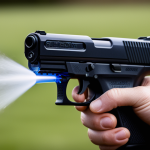Overview of Stretching in Cheerleading
Stretching is pivotal in competitive cheerleading, not just for enhancing performance but also for injury prevention. Proper stretching techniques are crucial to ensure the body is adequately prepared and to guard against potential injuries. In the fast-paced and physically demanding world of cheerleading, a proper cheerleading warm-up incorporates different types of stretching to cater to the diverse range of motions involved.
Static stretching involves holding a stretch in one position for a period, targeting specific muscle groups to improve flexibility. This form is often used post-activity for recovery. Dynamic stretching, on the other hand, consists of controlled movements that prepare the body for the exertion involved in cheer routines. It effectively raises heart rate and muscle temperature, facilitating injury prevention by loosening up the body’s primary movers.
Additional reading : Top Athlete Recovery Strategies: Boost Performance After Competition
The connection between stretching and injury prevention is profound. Routine stretching increases muscle elasticity, allowing for greater flexibility and range of motion—the hallmarks of a successful cheerleader. Stretching techniques tailored to the demands of cheerleading, when implemented consistently, can dramatically reduce the risk of strains, sprains, and overuse injuries. This comprehensive approach champions safety and performance, promoting cheerleading across all levels.
Top Stretching Techniques for Cheerleaders
Cheerleaders rely on effective stretches to boost flexibility and lower the injury risk during their performances. A diverse routine incorporating dynamic warm-ups, static stretches, and partner stretches can significantly enhance overall agility and team synergy.
Additional reading : Top-rated gel blasters to buy in the uk today
Dynamic Warm-Up Stretches
High knees are instrumental in activating leg muscles, crucial for jumps and stunts. Arm circles increase shoulder mobility, an essential element for lifts and catches. Leg swings enhance flexibility in the hips, facilitating smoother transitions in cheerleading stunts.
Static Stretching Techniques
The butterfly stretch is pivotal for improving hip flexibility, a necessity for splits and jumps. The hamstring stretch aids in reducing the risk of strains, promoting muscle recovery post-activity. Incorporating the quadriceps stretch in cool-down routines helps maintain muscle health and preparedness for future performances.
Partner and Group Stretches
Partner-assisted stretches offer increased flexibility by allowing deeper stretches safely, guided by mutual support. Group stretches not only serve to enhance team bonding but also ensure all members are equally prepared physically. It’s crucial to follow safety tips during partner stretches to avoid overextension and ensure proper technique.
Detailed Benefits of Each Stretch
Understanding the benefits of stretching can greatly enhance the effectiveness of a cheerleader’s training regimen. Each stretch targets specific muscle groups, enhancing both flexibility and strength.
High knees activate the leg muscles, particularly targeting the quadriceps, hamstrings, and calves. This exercise not only warms up the legs but also boosts cardiovascular endurance, which is crucial for high-energy routines. Evidence shows that regular practice of high knees can significantly improve overall leg strength and agility, contributing to injury reduction.
Arm circles are key to enhancing shoulder flexibility. By engaging the deltoid and rotator cuff muscles, they increase the range of motion and maintain joint health, lowering the risk of shoulder injuries. Cheerleaders often perform lifts and throws that demand robust shoulder mobility, making arm circles an essential part of their warm-up.
Moreover, the butterfly stretch is vital for hip flexibility, targeting the inner thighs (adductors). Consistent implementation of this stretch can prevent strains during splits and jumps, common movements in cheerleading. Over time, the sustained practice of these techniques leads to significant flexibility improvement, ensuring a resilient body capable of handling the athletic demands with reduced injury risks.
Implementation Tips for Cheerleading Teams
Incorporating consistent cheerleading practice is vital for team success. Establishing structured warm-up routines that include stretching not only enhances athletic performance but also promotes injury prevention. For optimal results, teams should integrate stretches at strategic points during their practice sessions.
It is beneficial to schedule stretching sessions both before and after practices and performances. Pre-practice warm-ups should focus on dynamic stretching to prepare the body for the physical demands of routines. Post-practice sessions can emphasize static stretching to encourage recovery, aiding in long-term flexibility improvement.
For coaches, monitoring and encouraging proper stretching techniques is crucial. Here are some tips to ensure effective stretch integration:
- Observe form: Closely monitor athletes to ensure correct form and posture during each stretch.
- Promote engagement: Encourage athletes to focus on which muscles are being targeted, fostering a deeper understanding of each movement.
- Tailor routines: Adapt stretching routines to cater to varying flexibility levels within the team, ensuring all members benefit.
Consistently applying these strategies can significantly enhance performance while mitigating the risks of injury. Stretch integration into warm-ups and cool-downs helps maintain a well-prepared and resilient cheerleading team.
Visual Aids and Demonstrations
Integrating stretching visuals and demonstration videos can significantly enhance the learning process for cheerleaders. Effective use of visual aids helps clarify complex stretching techniques, making it easier for team members to grasp proper form and execution.
Instructional aids such as diagrams and step-by-step illustrations can complement verbal instructions, offering clearer guidance. This layered approach ensures every cheerleader understands the subtleties involved in each stretch, leading to improved cheerleading flexibility and injury risk reduction.
Incorporating technology into stretching routines is increasingly common in modern training. Apps provide curated demonstration videos, allowing athletes to access instructional content anytime. Such resources encourage consistent practice, while real-time feedback features ensure progress is tracked reliably.
Recommended videos should focus on clearly demonstrating each movement, with detailed instruction on positioning and technique. Quality content highlights common stretching errors and offers corrections to prevent injury risks.
Ultimately, integrating visual and technological tools creates a dynamic learning environment, promoting a deeper understanding of effective stretches. By doing so, teams cultivate a culture of safety and excellence, paving the way for enhanced performance and flexibility.
Common Stretching Mistakes to Avoid
While stretching is crucial in minimising injury risks and enhancing flexibility, improper form can counteract these benefits. Let’s explore some prevalent stretching errors that often lead to injuries.
One common mistake is overstretching. It’s crucial to avoid pushing the body past its natural limits, which can cause strains or tears. Similarly, bouncing during a stretch, known as ballistic stretching, can increase tension and lead to muscle injuries. Instead, cheerleaders should practice proper technique such as static or dynamic stretching to ensure safety.
Holding a stretch for the wrong duration can also prove ineffective. Ideally, static stretches should be held for about 15-30 seconds to allow muscles to elongate gently. Moreover, neglecting warm-up routines before static stretching can leave muscles tight, heightening the risk of injury.
Another error is inconsistent breathing; holding one’s breath can increase tension. Instead, maintain a regular breathing pattern to help muscles relax. Over time, understanding and avoiding these errors will ensure that stretching contributes effectively to flexibility and performance.
Lastly, ensure that stretches are specific to the sport’s requirements. Each routine should cater to cheerleading’s dynamic movements, promoting agility, strength, and injury prevention. Following these guidelines lays the foundation for a resilient and competent cheerleading team.


